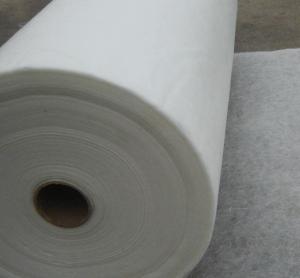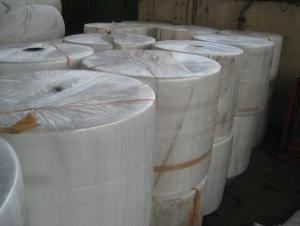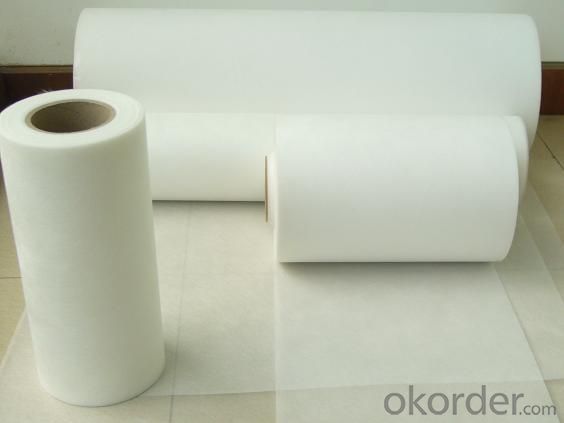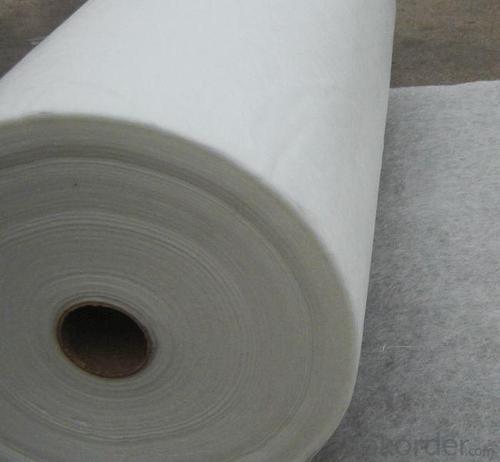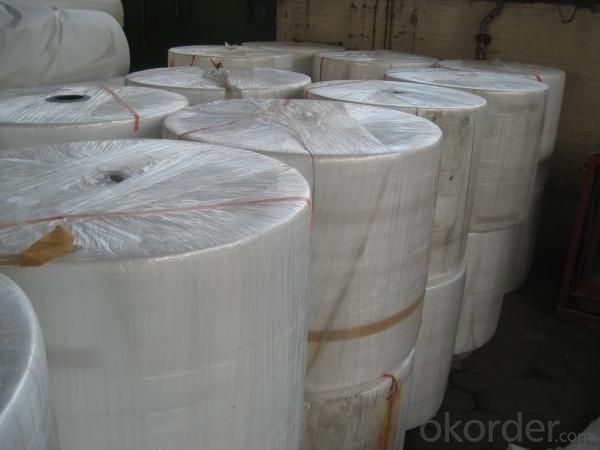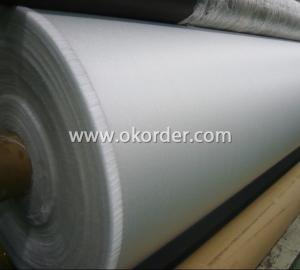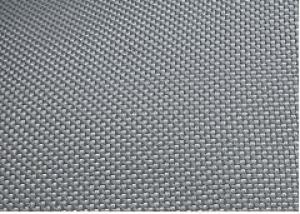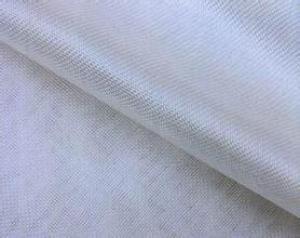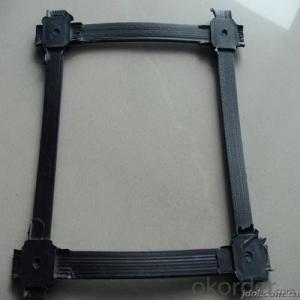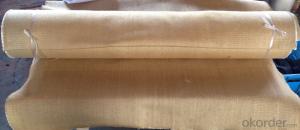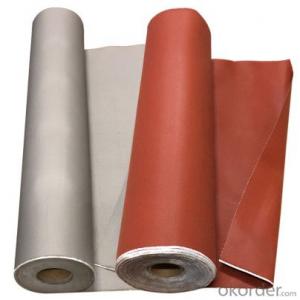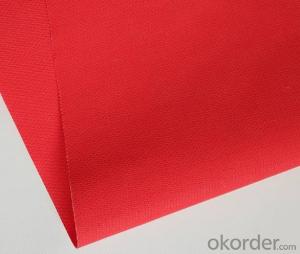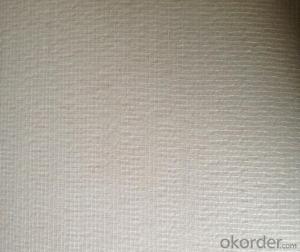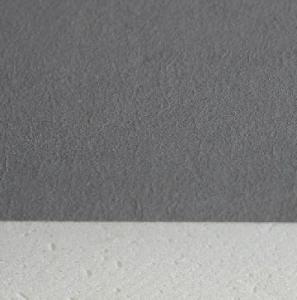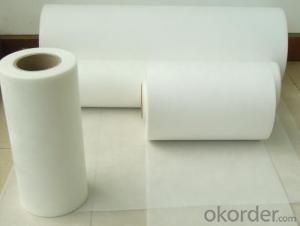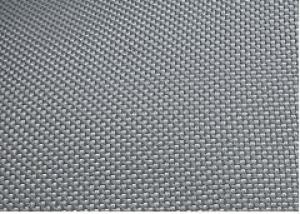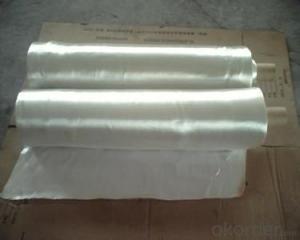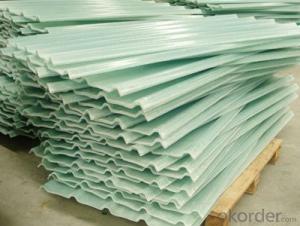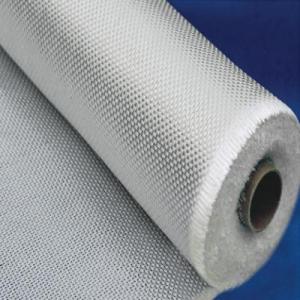Black Fiberglass Fabric RTM Mat
- Loading Port:
- China Main Port
- Payment Terms:
- TT or L/C
- Min Order Qty:
- One Pallet kg
- Supply Capability:
- 20 days for 1 x 40FCL kg/month
OKorder Service Pledge
OKorder Financial Service
You Might Also Like
Specification of FIberglass RTM Mat
1.ISO9001-2008 quality control certificate.
2.Chopped Strand Mat for RTM
3.Good wet out in resins.
Have ISO9001:2008 quality control certificate.
Chopped strand mat is suitable for application by hand lay-up, reinforce and machine FRPmolding, such as interior decoration of vehicles, boat hulls, sanitary ware, anticorrosive pipes, tanks, building materials, tables, chairs and all kinds of compisite FRP products.
Application of FIberglass RTM Mat
Product code | Glass type | Unite weight (g/m2) | Weight (mm) | Roll weight (kg) | Moisture (%) | Binder content (%) |
EMC100 | E Glass | 100+/-20 | 200-3200 | 30-70 | <0.2-0.3 | 2-6 |
EMC150 | E Glass | 150+/-20 | 200-3200 | 30-70 | <0.2-0.3 | 2-6 |
EMC200 | E Glass | 200+/-20 | 200-3200 | 30-70 | <0.2-0.3 | 2-6 |
EMC300 | E Glass | 300+/-20 | 200-3200 | 30-70 | <0.2-0.3 | 2-6 |
EMC450 | E Glass | 450+/-20 | 200-3200 | 30-70 | <0.2-0.3 | 2-6 |
EMC600 | E Glass | 600+/-20 | 200-3200 | 30-70 | <0.2-0.3 | 2-6 |
EMC900 | E Glass | 900+/-20 | 200-3200 | 30-70 | <0.2-0.3 | 2-6 |
Packing of FIberglass RTM Mat
Product is manufactured in form of a roll wound on a paper tube and then packed in a plastic film and placed within craft on pallet.
Above package is standard one, any other package style is negotiable by both of us.
Storage of FIberglass RTM Mat
It is recommended that the fiber glass is stored in a cool and dry environment. Recommended temperature range of storage is between 10-30°C and relative humidity between 50-75%. The fiber glass should store in the packaging until just prior to use.
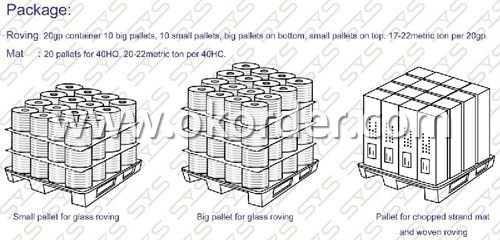
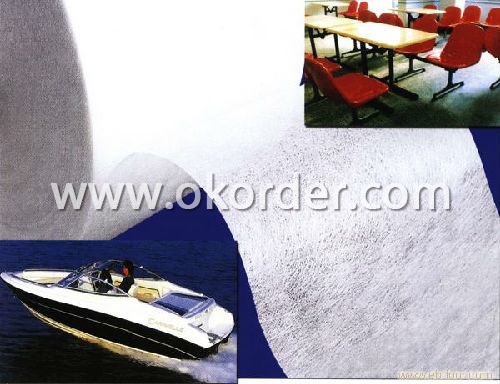
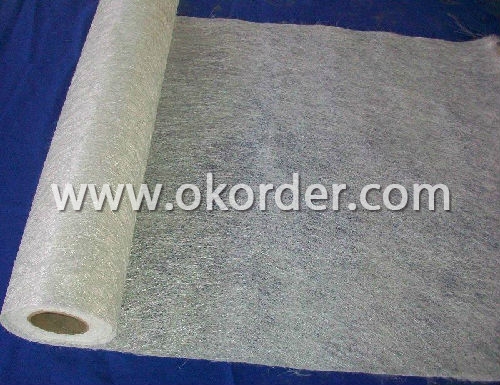
- Q: Are fiberglass fabrics suitable for use in the agricultural industry?
- Yes, fiberglass fabrics are suitable for use in the agricultural industry. They offer various benefits such as exceptional strength, durability, and resistance to chemicals, pests, and environmental elements. Fiberglass fabrics can be used for crop protection, greenhouse construction, animal housing, and other agricultural applications.
- Q: How do fiberglass fabrics perform in terms of moisture wicking?
- Fiberglass fabrics are not typically known for their moisture-wicking properties. They are better suited for applications where moisture resistance or insulation is required rather than actively wicking away moisture.
- Q: Hello, could you tell me how to do the surface treatment under the glass fiber cloth? Thank you
- Temperature resistant glass fiber cloth, with the characteristic of soft heat, compared with asbestos cloth, it has no dust, no harm to human body and other advantages, is the ideal substitute of asbestos, fire resistance, heat resistance, energy saving products is a kind of economical and practical.
- Q: How is fiberglass fabric used in the insulation industry?
- Due to its exceptional thermal and acoustic insulation properties, fiberglass fabric finds extensive use in the insulation industry. It is a popular choice for insulating materials in numerous applications, including residential and commercial buildings, automotive, aerospace, and industrial equipment. In the construction industry, fiberglass fabric plays a vital role in insulation. It is commonly installed in walls, floors, and ceilings to enhance energy efficiency, reduce heating and cooling expenses by limiting heat transfer. Acting as a barrier, it prevents the flow of heat between different areas of a building. Moreover, its ability to resist moisture absorption helps prevent the growth of mold and mildew, ensuring a healthier indoor environment. Fiberglass fabric is also employed in the insulation of pipes, ducts, and HVAC systems. This usage helps maintain desired temperatures and prevents heat loss or gain during the transportation of liquids or air. Consequently, it ensures efficient operation and reduces energy consumption. Additionally, fiberglass fabric finds utilization in vehicle and aircraft insulation. It minimizes the transfer of heat and noise from the engine or external environment, providing passengers with a comfortable and quiet interior. Its lightweight and flexible nature make it ideal for these applications, as it can be easily molded and installed in complex shapes and tight spaces. In industrial settings, fiberglass fabric is used to insulate equipment such as boilers, furnaces, ovens, and tanks. By retaining heat, it facilitates efficient operation and minimizes energy loss. Furthermore, its fire-resistant properties are crucial for industries dealing with high temperatures and potential fire hazards. In summary, fiberglass fabric is a highly versatile and durable material with excellent insulation properties. Its thermal and acoustic insulation capabilities, moisture resistance, and ability to withstand high temperatures make it a preferred choice for various applications. Consequently, it contributes to energy efficiency, environmental sustainability, and improved comfort.
- Q: What are the different finishes available for fiberglass fabric rolls?
- There are several different finishes available for fiberglass fabric rolls, each providing unique characteristics and benefits. Some common finishes include: 1. Plain: Plain finish refers to fiberglass fabric without any additional treatment or coating. It offers excellent strength and durability, making it suitable for a wide range of applications. 2. Silicone: Silicone-coated fiberglass fabric rolls are popular due to their exceptional heat resistance and non-stick properties. This finish provides excellent release properties, making it ideal for applications involving high temperatures or sticky materials. 3. Aluminized: Aluminized finish involves applying a layer of aluminum to the surface of the fiberglass fabric. This finish offers excellent heat reflection properties, making it suitable for applications where heat insulation is required. 4. Vermiculite: Vermiculite-coated fiberglass fabric rolls provide enhanced fire resistance and heat insulation capabilities. The vermiculite coating expands when exposed to high temperatures, creating a protective barrier against heat and flames. 5. PTFE: PTFE (polytetrafluoroethylene) coating is often applied to fiberglass fabric to enhance its chemical resistance and non-stick properties. This finish is commonly used in applications involving corrosive chemicals or where easy release is required. 6. PVC: PVC (polyvinyl chloride) coating is applied to fiberglass fabric to provide additional protection against chemicals, oil, and moisture. It also offers increased strength and flexibility, making it suitable for various industrial applications. These are just a few examples of the finishes available for fiberglass fabric rolls. Depending on the specific requirements of an application, there may be additional finishes or combinations of finishes that can be utilized to meet the desired functionality and performance.
- Q: Glass fiber cloth and glass fiber?
- Characteristics of glass fibers:The general concept of glass is hard and brittle objects, not suitable as structural material, but as the thread, the strength is greatly increased and is flexible, with resin to give it shape can finally become excellent timber structure. Glass fibers increase in strength as their diameter decreases.
- Q: What are the different lamination options available for fiberglass fabric?
- There are several lamination options available for fiberglass fabric, depending on the specific requirements and applications. Some of the common lamination options include: 1. Polyester Resin Lamination: This is the most commonly used lamination option for fiberglass fabric. Polyester resin is applied to the fabric, forming a strong and durable bond. It provides good chemical resistance and is suitable for applications where high strength is required. 2. Epoxy Resin Lamination: Epoxy resin lamination offers superior strength and excellent adhesion. It is often used in applications that require high-performance and resistance to harsh environmental conditions. Epoxy resin also provides good chemical and heat resistance. 3. Polyurethane Lamination: Polyurethane lamination offers flexibility and excellent abrasion resistance. It is commonly used in applications that require fabric flexibility and durability, such as inflatable structures or protective clothing. 4. Vinyl Ester Resin Lamination: Vinyl ester resin is a hybrid between polyester and epoxy resins, offering high strength and excellent corrosion resistance. It is commonly used in applications exposed to harsh chemicals or environments, such as chemical storage tanks or marine applications. 5. Thermoplastic Lamination: Thermoplastic lamination involves the use of heat and pressure to bond a thermoplastic film onto the fiberglass fabric. This option provides good chemical resistance and is often used in applications that require waterproofing or resistance to environmental elements. It is important to consider the specific requirements and intended use of the fiberglass fabric when choosing the appropriate lamination option. Factors such as strength, flexibility, chemical resistance, and environmental conditions will help determine the most suitable lamination choice.
- Q: What are the different weaves available in fiberglass fabric?
- There are several different weaves available in fiberglass fabric, each with its own unique characteristics and applications. Some of the most common weaves include: 1. Plain Weave: This is the most basic and commonly used weave in fiberglass fabric. It consists of a simple over-under pattern, with each weft yarn passing alternately over and under each warp yarn. Plain weave fabrics have good stability, high strength, and are suitable for a wide range of applications. 2. Twill Weave: Twill weave is characterized by a diagonal pattern created by the interlacing of the weft yarns. This weave provides excellent drapability and conformability, making it ideal for applications that require flexibility and ease of handling. Twill weave fabrics also have good strength and are commonly used in areas such as aerospace, automotive, and marine industries. 3. Satin Weave: Satin weave fabrics have a unique pattern where the weft yarns float over multiple warp yarns before interlacing. This creates a smooth and lustrous surface with minimal yarn crimp. Satin weave fabrics offer exceptional drapability, high strength, and a luxurious appearance. They are often used in high-end applications such as aircraft interiors, sports equipment, and premium automotive parts. 4. Leno Weave: Leno weave is characterized by pairs of warp yarns that twist around each other after each weft insertion. This weave creates an open, mesh-like structure that offers good breathability and allows for air and liquid flow. Leno weave fabrics are commonly used in filtration, reinforcement, and composite applications. 5. Basket Weave: Basket weave consists of multiple warp yarns woven together with multiple weft yarns. It creates a checkerboard-like pattern with a balanced construction. Basket weave fabrics offer good stability and are often used in applications that require high dimensional stability and resistance to distortion. These are just a few examples of the different weaves available in fiberglass fabric. The choice of weave depends on the specific requirements of the application, such as strength, flexibility, breathability, or appearance.
- Q: What is the difference between glass fiber plain cloth and glass fiber grid cloth? What are the specifications and specifications of plain cloth and square cloth?
- Glass fiber plain woven fabric refers to the warp and weft at 90 angles up and down weaving woven fabric. In the glass fiber industry, usually spinning (monofilament diameter less than 9 microns) to weave. In addition to the plain method, can also use different weave twill or satin weave etc..
- Q: What type of needle is used for sewing fiberglass fabric?
- A heavy-duty needle is the common type used for sewing fiberglass fabric. Its design is specifically made to endure the abrasive nature of fiberglass, featuring a sharp point and a thick shaft to penetrate the dense fibers of the fabric. Manufacturers typically construct it using robust materials such as stainless steel or titanium, guaranteeing its resistance to breakage or bending during the sewing process. Moreover, some sewers may opt for a needle coated with Teflon to minimize friction and prevent the fiberglass fabric from adhering to the needle. In summary, the use of a heavy-duty needle is vital when sewing fiberglass fabric to ensure successful stitching through the resilient fibers without causing any harm or breakage.
1. Manufacturer Overview
| Location | Zhejiang, China |
| Year Established | 1969 |
| Annual Output Value | Above US$ 150 Million |
| Main Markets | overseas companies in Hongkong, Canada, South Africa, South Korea, India, Italy, Singapore, France and many other countries and regions. |
| Company Certifications | ISO9001;ISO14001 |
2. Manufacturer Certificates
| a) Certification Name | |
| Range | |
| Reference | |
| Validity Period |
3. Manufacturer Capability
| a) Trade Capacity | |
| Nearest Port | Shanghai |
| Export Percentage | 40%-50% |
| No.of Employees in Trade Department | 21-50 People |
| Language Spoken: | English |
| b) Factory Information | |
| Factory Size: | Above 5000,000 square meters |
| No. of Production Lines | Above 5 |
| Contract Manufacturing | |
| Product Price Range | Average |
Send your message to us
Black Fiberglass Fabric RTM Mat
- Loading Port:
- China Main Port
- Payment Terms:
- TT or L/C
- Min Order Qty:
- One Pallet kg
- Supply Capability:
- 20 days for 1 x 40FCL kg/month
OKorder Service Pledge
OKorder Financial Service
Similar products
Hot products
Hot Searches
Related keywords
